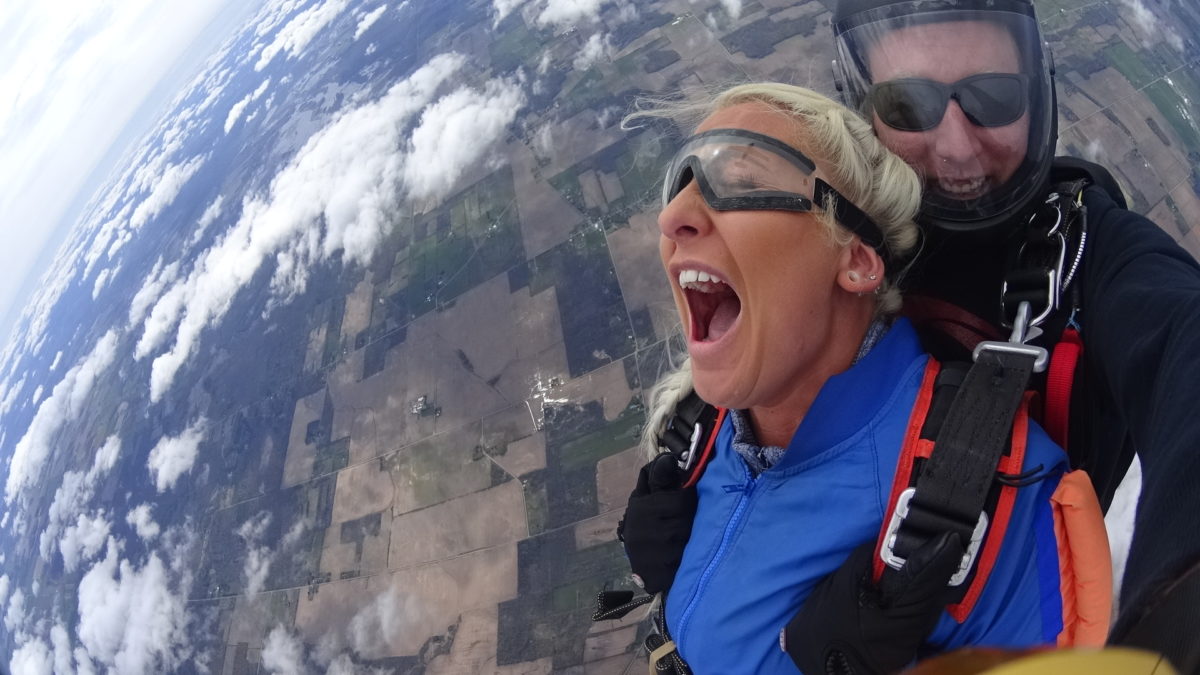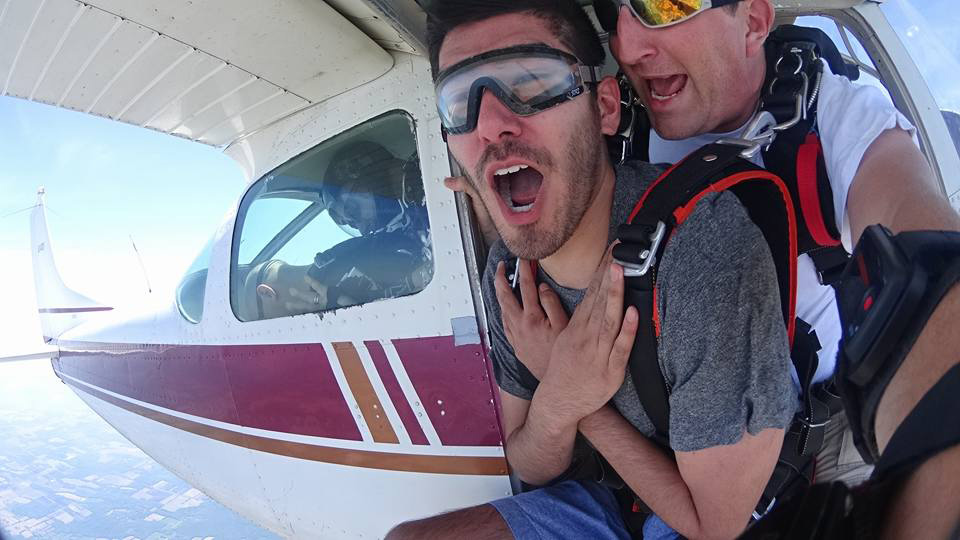Whether it’s on the big drop of a roller coaster or driving atop rolling hills, you know that feeling – butterflies in your tummy rising up to your throat and back down to the base of your belly. It’s almost a tickling sensation that either causes you to giggle or maybe even barf!
It’s no question why first-time skydivers are concerned with getting that nauseous feeling while on a skydive. I mean, you are jumping from a high altitude – it’s bound to happen, right? Mmm… Not exaaactly. Skydiving motion sickness is pretty rare but it can happen especially if you are prone to getting this feeling normally. But don’t you worry – that’s why we’ve got the tips on how to prevent motion sickness while skydiving and prevent you from vomiting on video.
Does Your Stomach Drop When Skydiving?
Most first-timers think they will get that roller coaster or stomach drop feeling when they exit the aircraft – which is a huge misconception. The goal for the tandem instructor is to get stable as quickly as possible following the exit without rushing, so you won’t exactly be doing backflips and crazy spins upon exit – for safety reasons of course!
The reason you don’t get that stomach drop feeling is that the plane is already moving forward at high speeds, so when you exit – you ride “the hill” to a gradual increase of 120+ mph before you stabilize rather than going from 0 to 100 real quick. And once you stabilize, you’ll feel like you’re floating on a bed of air rather than falling during the freefall portion of skydiving.

Following freefall, your instructor will deploy the main parachute or canopy. The canopy ride is one of the best parts of your first-time skydiving experience – the freedom you’ll feel floating thousands of feet above Earth is like no other! This is also the time when most people may experience a bit of motion sickness due to the movements of the canopy. People who experience nausea after skydiving were likely affected by the canopy ride rather than the freefall itself.
If you feel like you’re getting sick and are going to puke during the canopy ride, please say something. Your instructor has a way to handle the situation as cleanly as possible by turning the parachute just right to help avoid getting puke on you and your instructor. Mostly because we want you to be comfortable and have a good time, but also because vomit tends to go up when skydiving which means all over your instructor! No bueno.
Tips To Prevent Skydiving Motion Sickness
Tip #1: Eat a Lil’ Somethin’
We can’t say it enough – eating will not increase your chances of getting motion sickness on your skydive. On the contrary, NOT eating will! And if you’re wondering what to eat before skydiving the answer is pretty simple. Just eat like you normally would but focus on foods that give you energy rather than greasy foods that make you feel lethargic.
Tip #2: Keep Your Eyes on the Horizon
If you’re feeling a little disoriented, keep your eyes on that beautiful blue horizon – it helps your brain register which way is up and helps you stay balanced. If it helps to get a seat by the window on the plane ride up to altitude, do that too!

Tip #3: Avoid Alcohol
Attempting a skydive drunk or hungover is a sure way to wind-up dizzy, vomitous, and straight-up miserable. It is best to avoid alcohol at least 8 hours before your skydive. Trust us, you’ll want to fully take in this experience 100% sober and cognizant. Embrace the natural high of the sky!
Tip #4: Come Prepared
Wear your prescription glasses/contacts, bring water/snacks, and, if you feel it is necessary, bring whatever medication you think you may need to help prevent motion sickness. As long as the medication doesn’t make you drowsy, it is okay to take. If you’re super concerned, always consult a physician before going skydiving.
Tip #5: Communicate!
Always, always, always communicate with your instructor throughout the whole process so they can adjust as necessary to keep you comfortable and nausea-free to ensure you have a great skydiving experience!
Altitude Sickness And Skydiving
Altitude sickness can occur when you move to a higher altitude too quickly and is accompanied by symptoms such as headaches and dizziness. It is possible to get altitude sickness while skydiving, however, it is pretty uncommon at a normal tandem skydiving altitude of 8,000 to 14,000 ft. Skydiving planes normally take anywhere from 15 to 20 minutes to climb to altitude and you descend pretty quickly to ensure you’re getting plenty of oxygen.
Ready to go skydiving? Get a glimpse of The Great Lakes and book your jump at the premier place to skydive in Western New York – WNY Skydiving! Blue skies.





